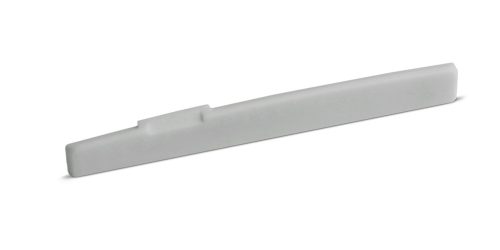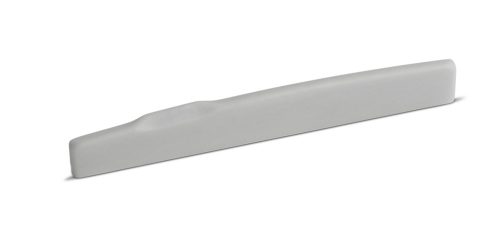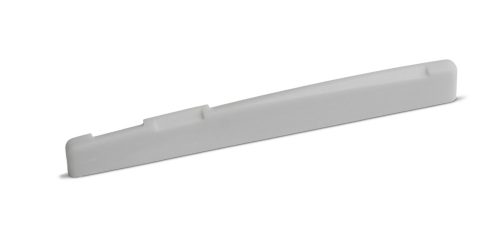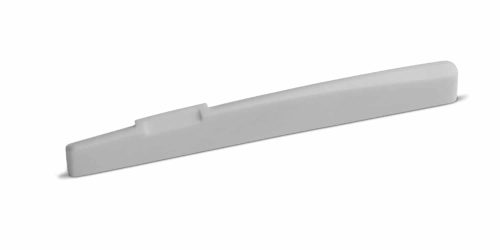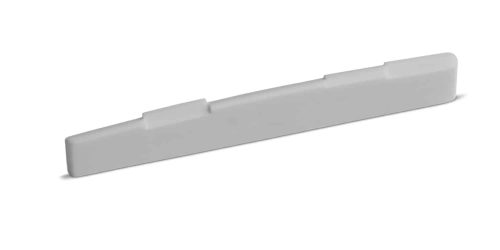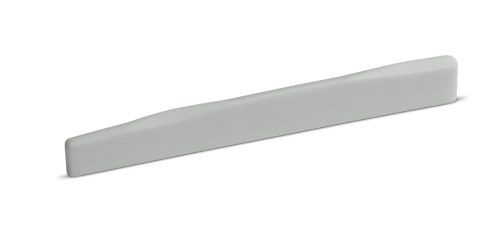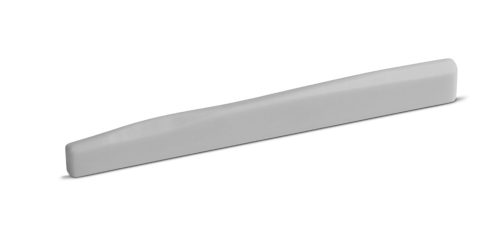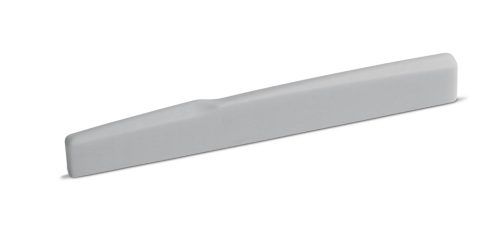Acoustic Guitar Saddle Compensation Patterns
Steel-string acoustic guitars often come with compensated saddles to adjust for different string radii and scale lengths. This article details the common acoustic guitar saddle compensation patterns. Note: For more information about saddle compensation, please see the following article: Why Isn’t My Acoustic Guitar Intonating Well.
Forward Line B Compensated Saddle
For this type, the saddle is compensated so that there is a slot for the B string so that it sits further away from the saddle than where the other strings rest. Notably, Taylor and Gibson have used forward line B compensated saddles. Visit our Guide to B Compensated Saddles to learn more.
B Compensated with Slanted Bass
This saddle type is similar to a B compensated saddle in that a distinct slot for the B string appears, and at first glance, might apper to be the same. However, a progressive slant appears for the wound strings to sit further back from the soundhole and extend bass string length. Alvarez, Eastman, Epiphone, Guild, and Yamaha often use this type of saddle.
Fully Compensated Saddle
Also known as ‘step compensated’, a fully compensated saddle has five distinct slots – one for the treble E, one for the B, one for both the G and D, one for the A, and one for the bass E. Note that both the G and D strings sit forward, whereas with a B compensated with slanted bass saddle, the D string will have some backward compensation. As such, we don’t advise replacing a B compensated saddle with a fully compensated saddle, or vice versa. Greg Bennett, Emerald, and many pre-2010 Seagull guitars often use fully compensated saddles. See our Guide to Fully Compensated Saddles for more information.Wave Compensation Saddles
Wave compensation saddles have a wavelike appearance with smooth lines that contrast with the straight lines and 90 degree angles often seen on other saddle types. Please see our Guide to Wave Compensated Saddles for more information on the different wave compensation types. Several notable manufacturers use wave compensation saddles. For instance, Martin and Taylor guitars models often use wave compensation saddles.Zig Zag Compensation
A zig zag, or lightning, compensated saddle will have one angle for the treble E and B strings, and a second angle for the wound strings. Post-2010 Godin and Seagull saddles often use this compensation pattern. Some Bourgeois, Breedlove, and Collings saddles also use this pattern.
Non-Compensated Guitar Saddles
Your guitar may a non-compensated saddle. If so, we advise that you replace it with a non-compensated saddle. These come in three different types – center line, forward line, and diagonal line. Please see our Guide to Non-Compensated Acoustic Guitar Saddles for more information.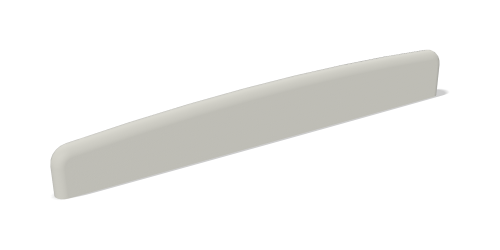
Split Saddle

Plain G String Compensation
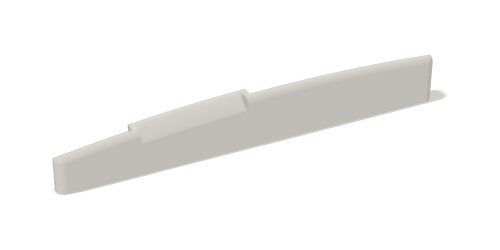
Height Adjustable Saddles
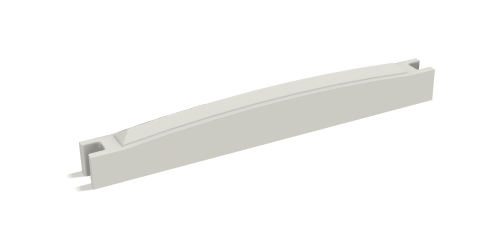
Through Saddles
A through saddle cuts through the bridge and are often associated with Martin guitars from the first half of the twentieth century as Martin used these from 1916 to 1965, and on some Martin retro models since the 1990s. For more information see our Guide to Martin Guitar Saddles. You will occassionally see these on some Gibson, Eastman, Collings, Huss and Dalton, and other brands’ models, too.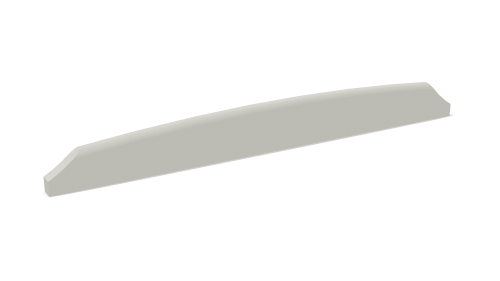
Routed Front Saddles
Commonly associated with Taylor T5 guitars, routed front saddles are similar to center line non-compensated saddles on the back side, but have string compensation routed into the front as shown in the below image. See our Guide to Routed Front Guitar Saddles for more information.

Which Compensation Pattern is the Best?
No universal ‘best’ compensation pattern exists because there are a number of factors involved, including bridge saddle slot angle, scale length, and string diameter that guitar builders factor in when choosing a saddle compensation pattern. Typically, you should use the same compensation pattern that the builder used – please see our Acoustic Guitar Saddle Size Chart for more information. However, you might want to use a different acoustic guitar saddle compensation pattern if you’re experiencing intonation issues.
What Compensation Pattern Is My Saddle?
There are numerous variants of the above patterns, as well as other less common saddle compensation patterns. If you’re not sure which type you have, please contact us and we can provide more information.

